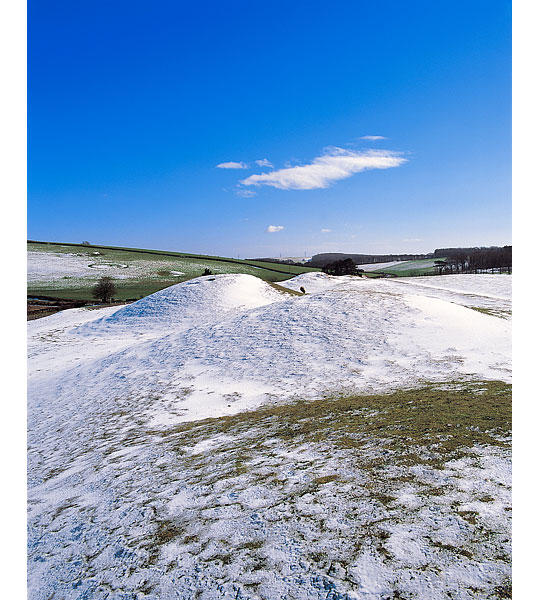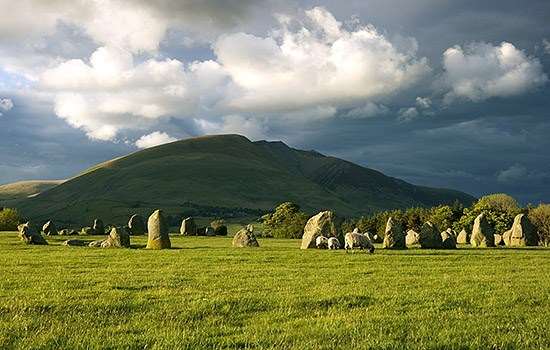History of Winterbourne Poor Lot Barrows
The motorist driving along the A35 has scarcely a moment to take in this group of barrows, or burial mounds, straddling the road west of Winterbourne Abbas. These belong to one of several Bronze Age cemeteries in the area, which has the highest density of Bronze Age barrows in the British Isles. In this particular cemetery alone there are 44 barrows, dating from about 1500 BC.

Types of Barrow
Barrows are traditionally classified according to their shape.
Long barrows date from the time of the earliest farmers. Some of them, like West Kennet in Wiltshire, are very large, containing several burial chambers, and remained in use for hundreds of years.
Round barrows, the kind found at Winterbourne, date from the Late Neolithic or Early Bronze Age, and are usually divided into four types: bowl (steep-sided); bell (where the mound is separated from a surrounding ditch by a narrow platform); disc (flatter, with a wider ditch); and pond (hollow in the middle and surrounded by a bank). However, it is now realised that the present eroded shape of these burial mounds may give little clue to their original appearance thousands of years ago.
The Winterbourne Barrows
All four types of round barrow can be found at Winterbourne, including the rarer disc and pond barrows.
Some are in groups of two or three, perhaps suggesting family relationships. The largest barrow is a bowl barrow, at the centre of the group: it has a diameter of 35 metres (115 feet) and is 2.5 metres (8 feet) high. To the west of this is a large group comprising one disc barrow and seven bowl barrows.
Unusually, the Poor Lot Barrows are located across the bottom and sides of a valley, rather than on a ridge or hilltop as was the norm.
Very few of the barrows here have been excavated, and we do not know what kind of burials they contain. Some may contain bodies, although by the Early Bronze Age cremation had become common: the ashes of the dead were placed in pots with a raised band around the top, known as collared urns. Sometimes food vessels are found with the urn, and occasionally weapons such as bronze daggers or stone axe heads.
Further Reading
Gale, J, Prehistoric Dorset (London, 2003)


